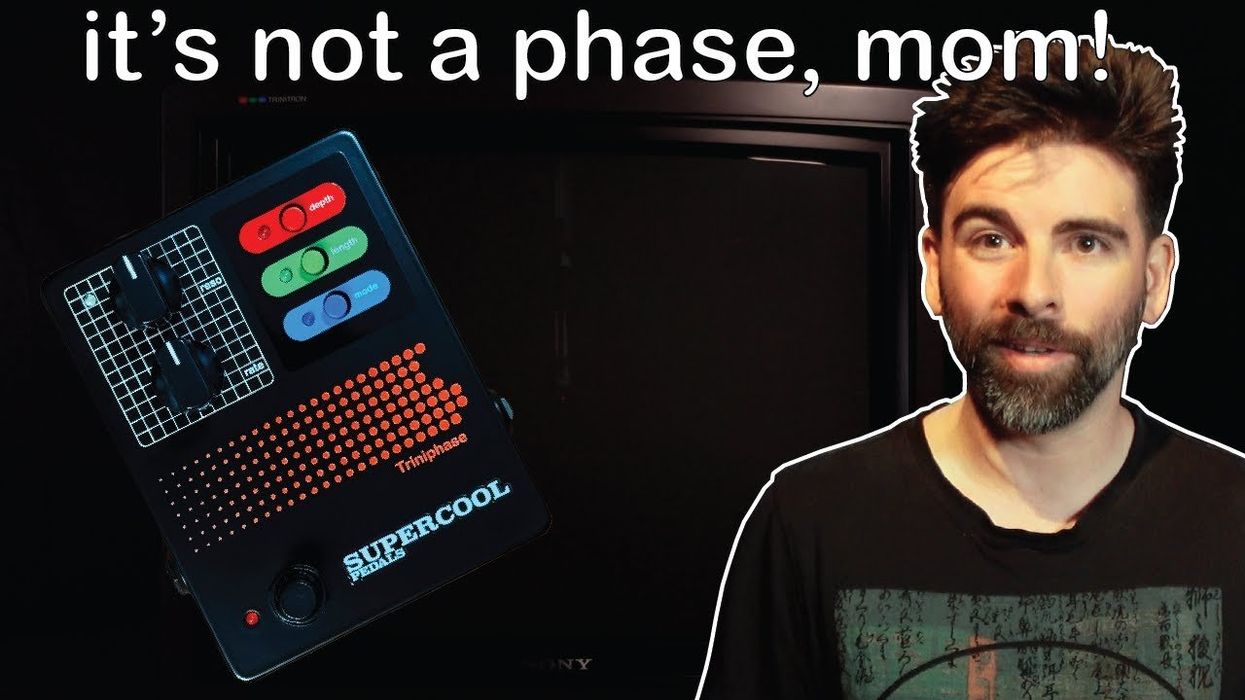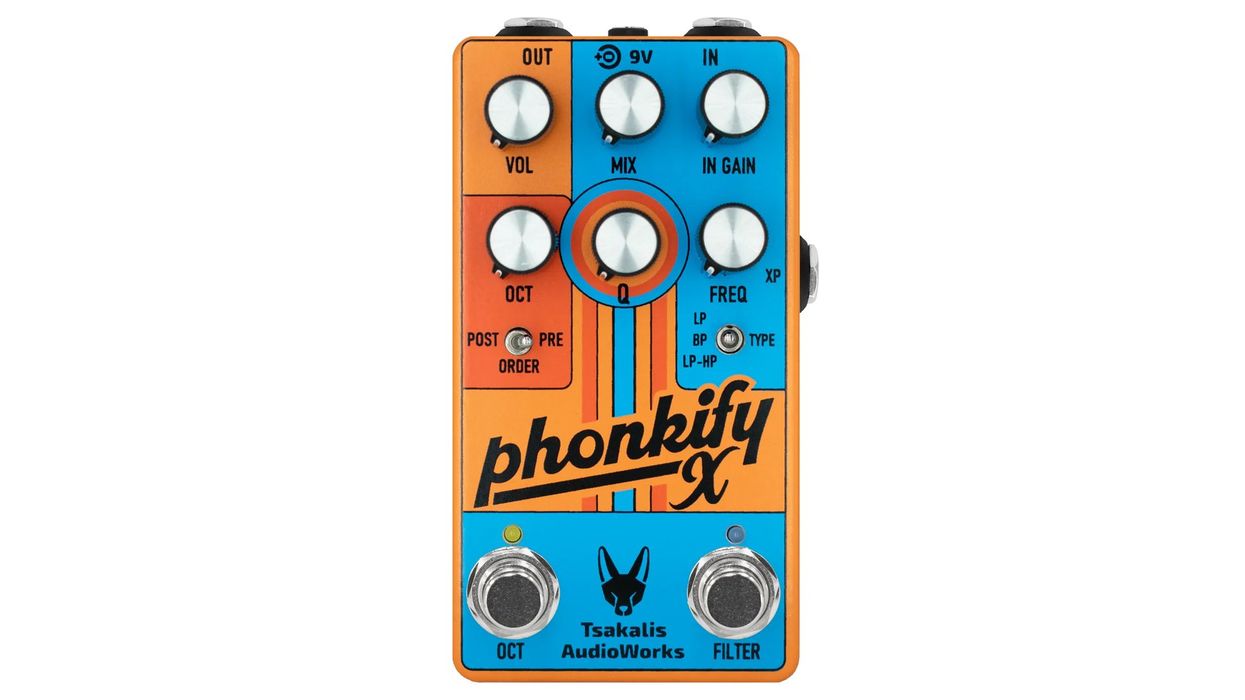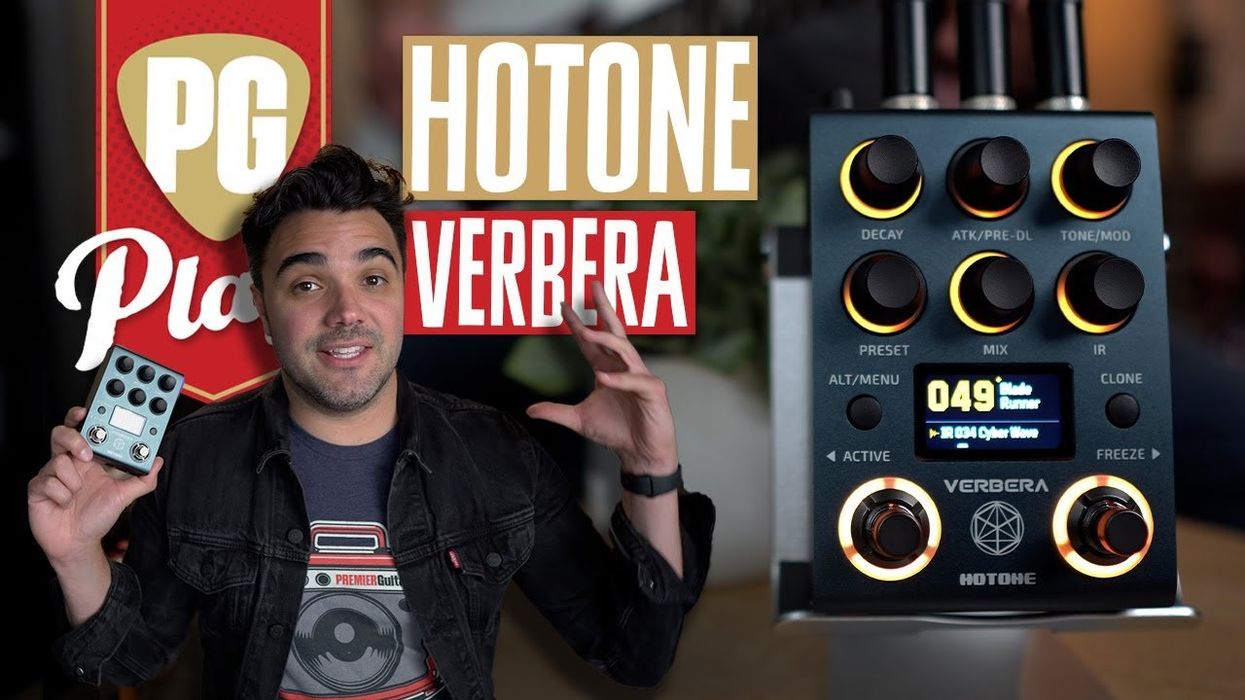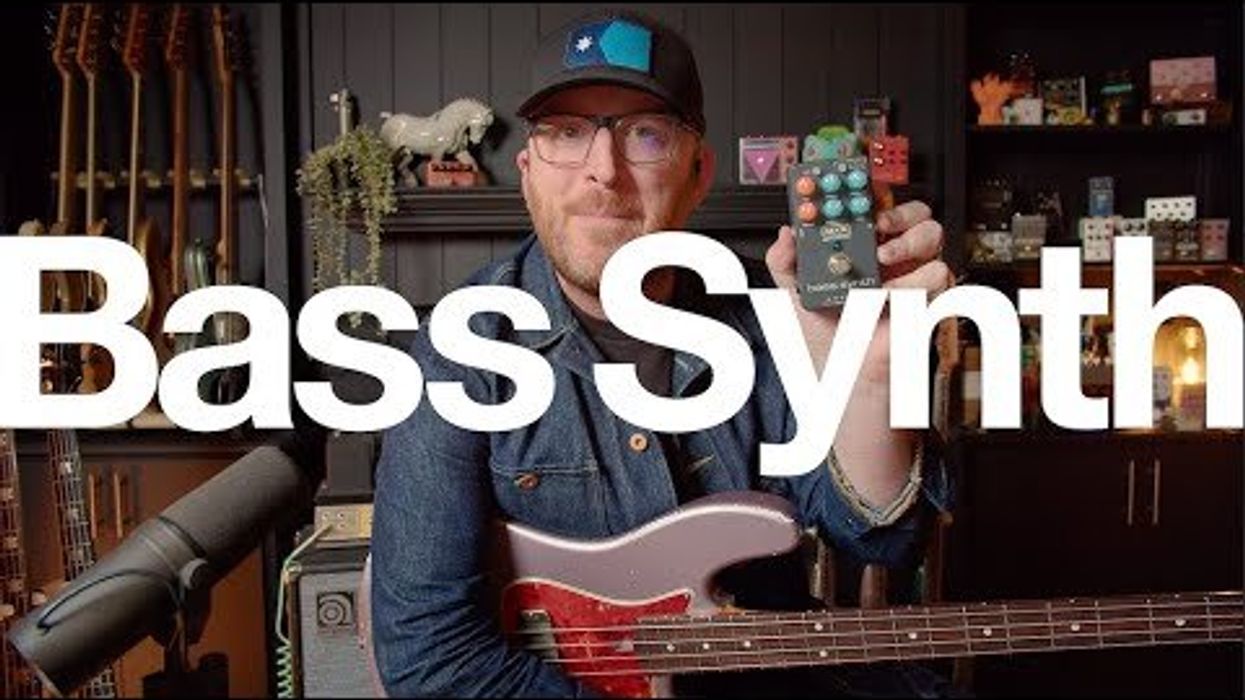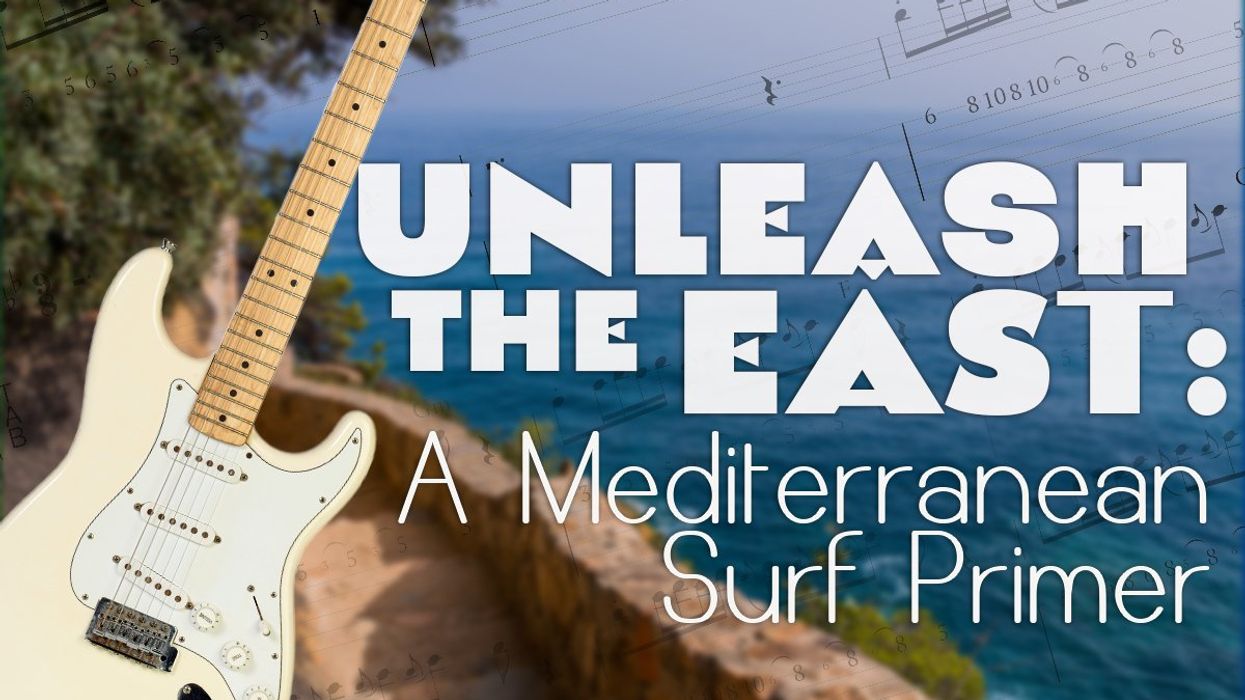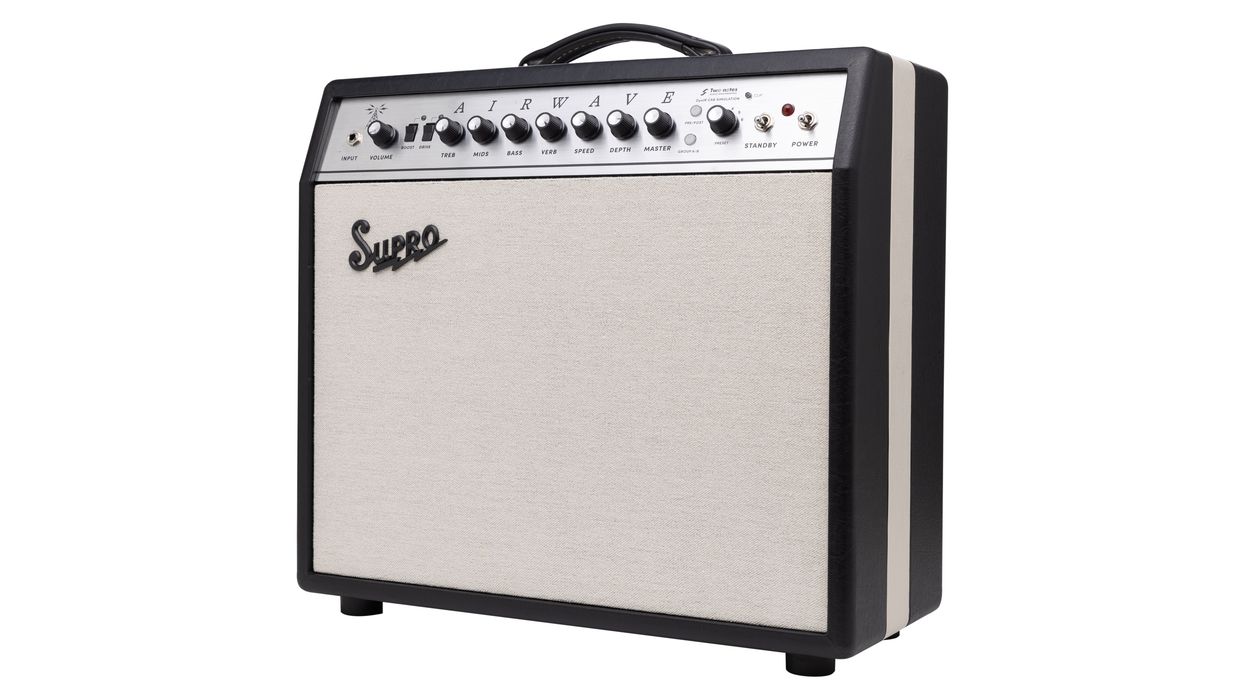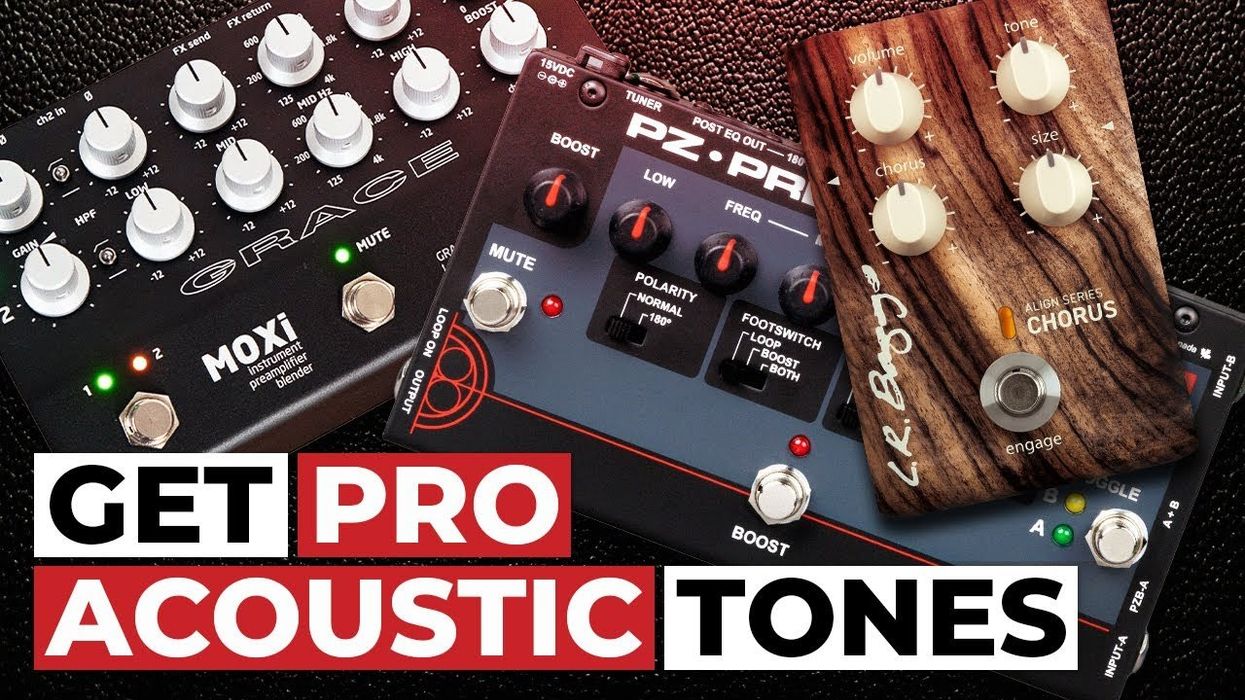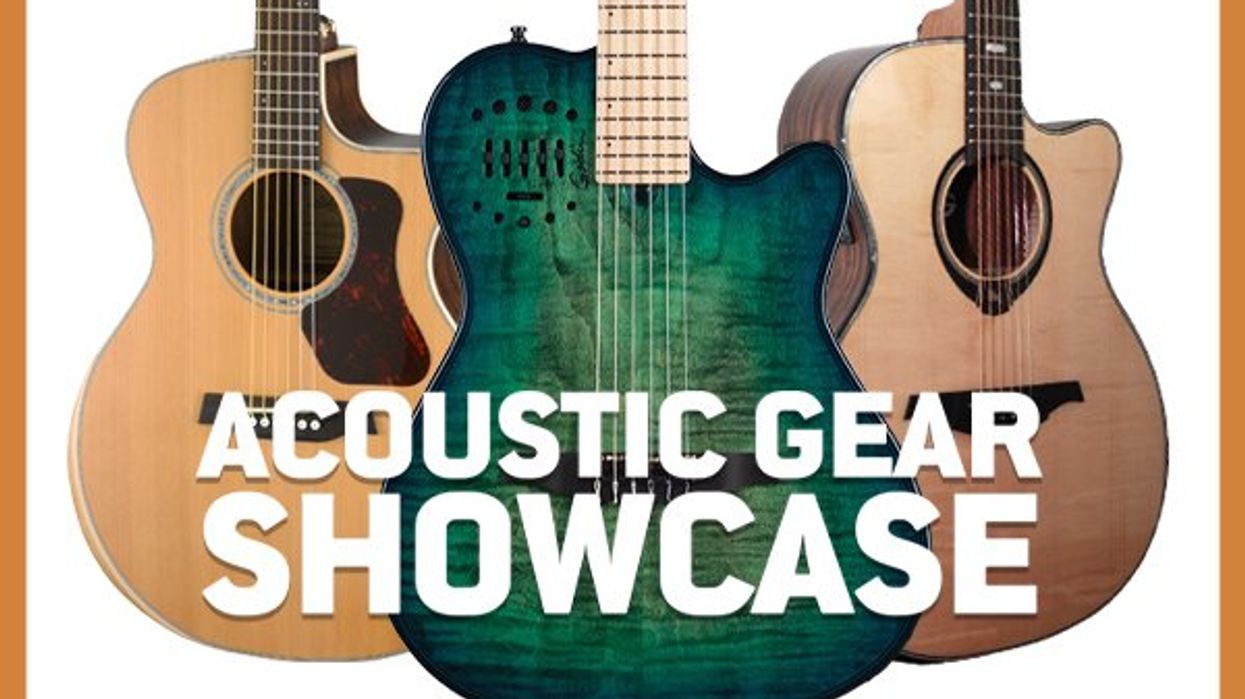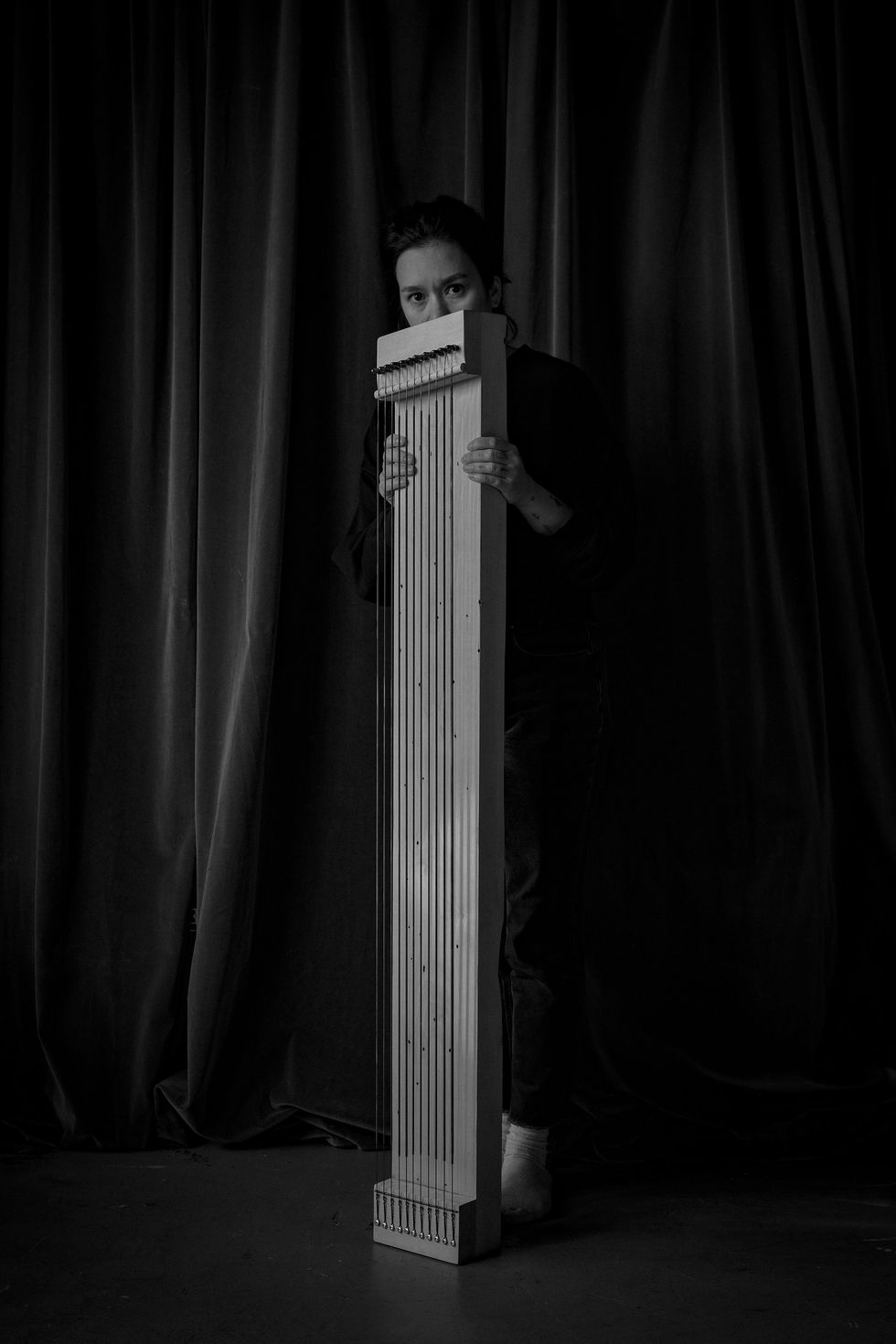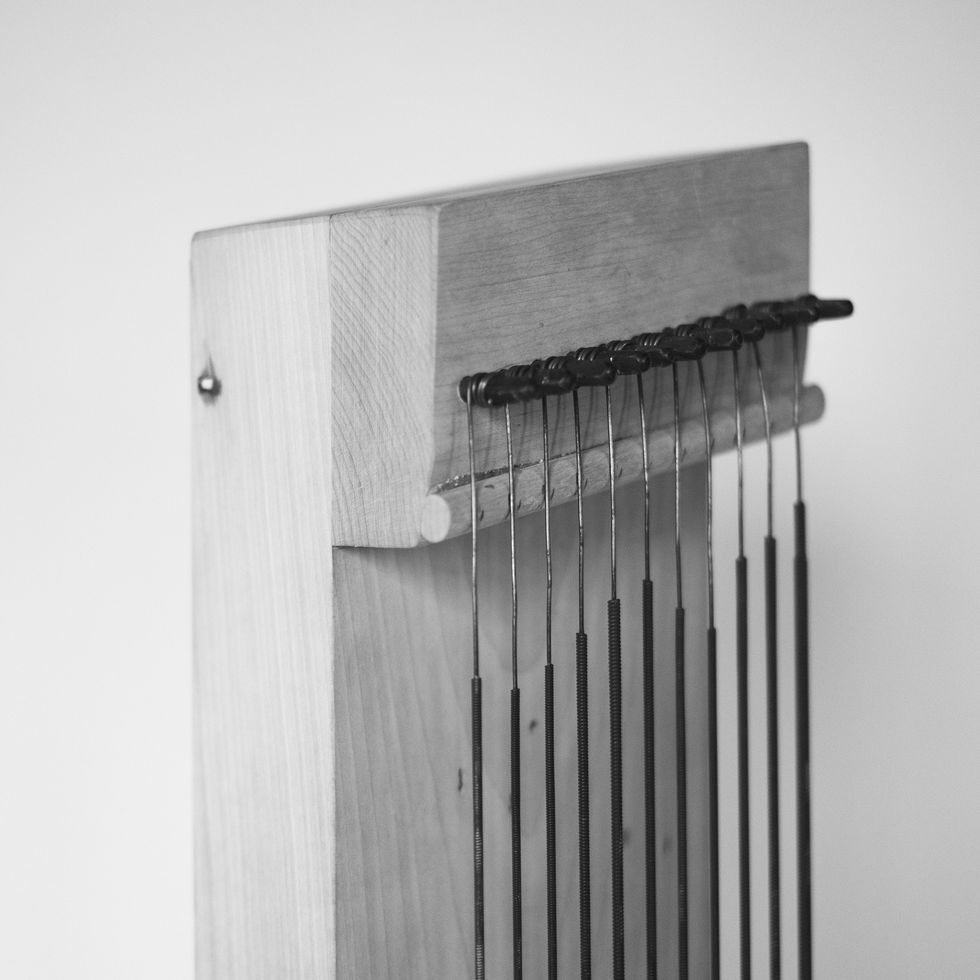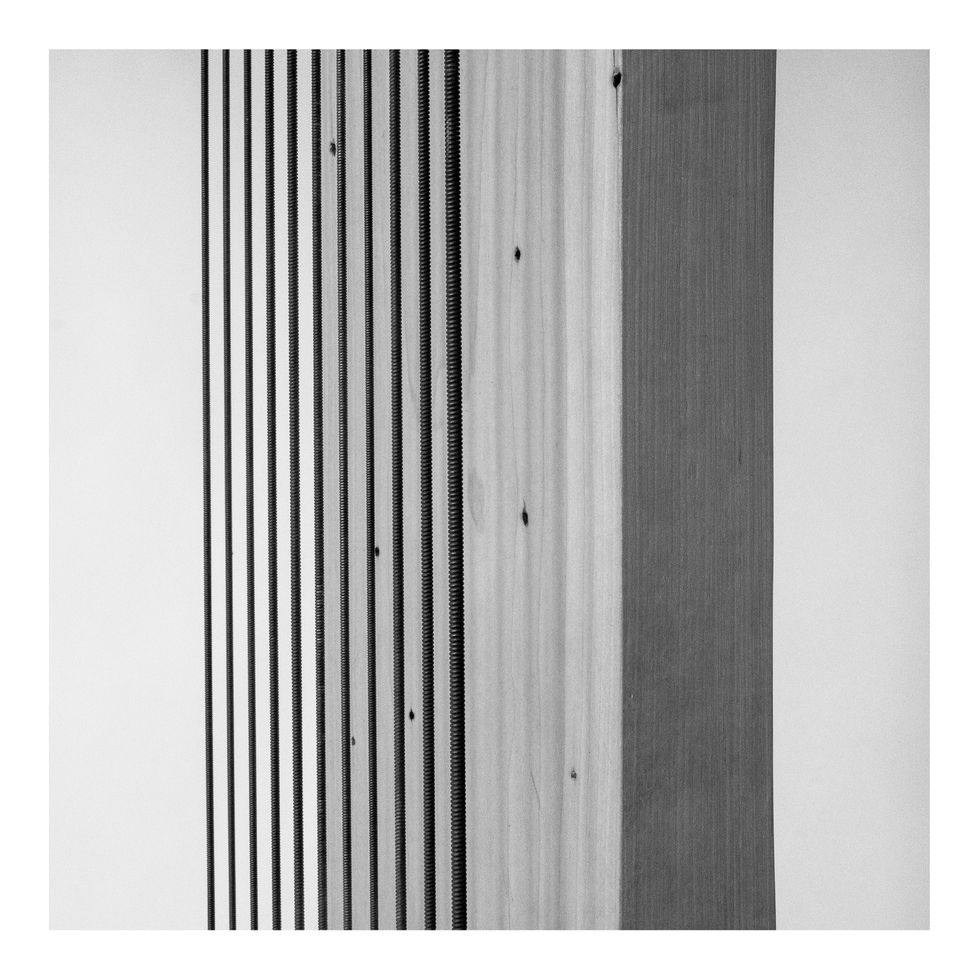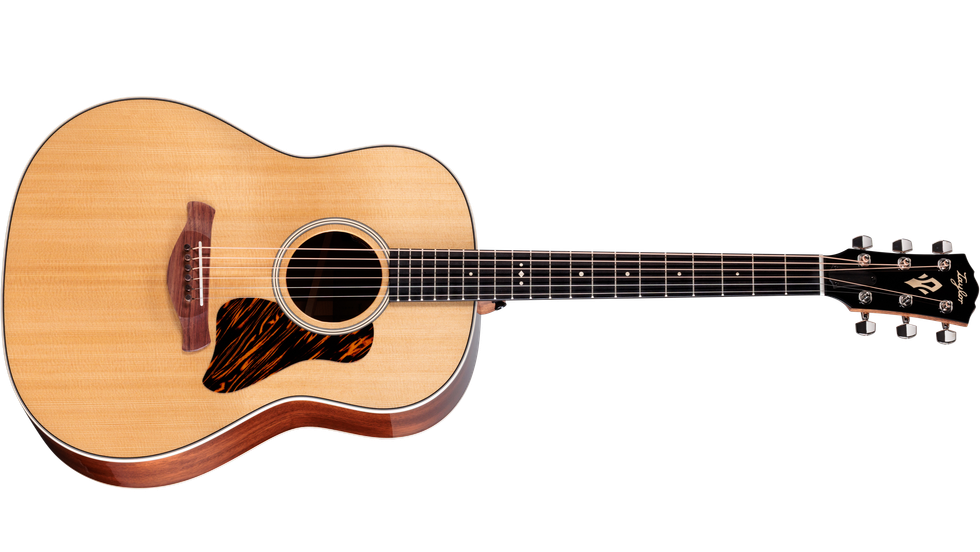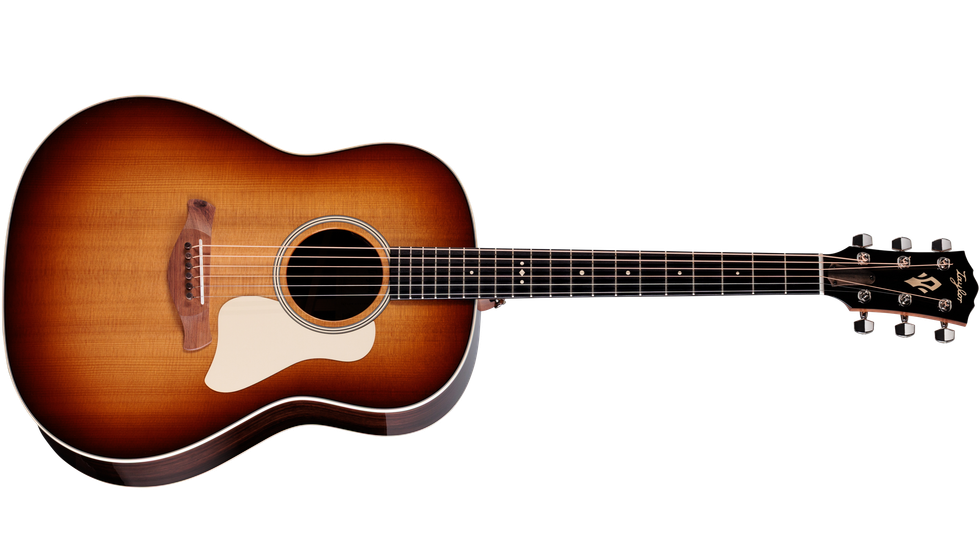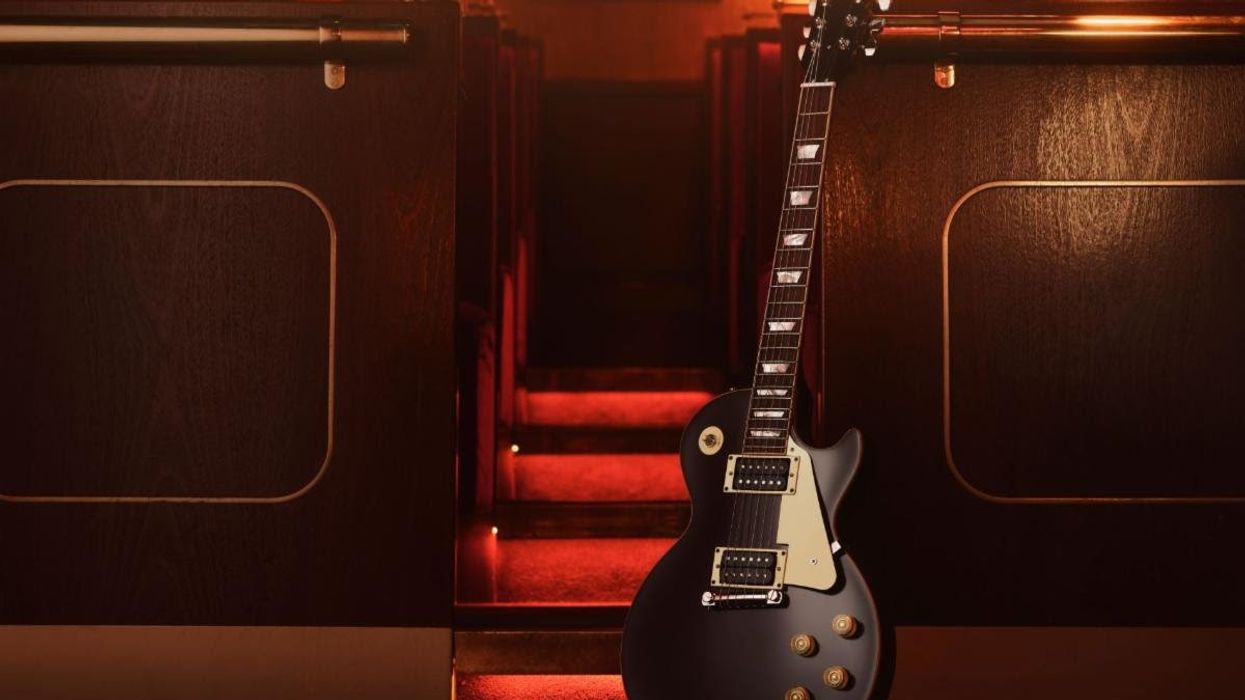| Download Example 1 Radio - Fender American Strat Download Example 2 Heavy - Ibanez Saber Download Example 3 Heavy Parked - Ibanez Saber Clips recorded with Blackstar HT40 emulated line out to E-MU 0404 USB into Cubase 5. |
Though it rewards the adventurous and looks dangerous, the Triskelion (which was inspired in no small part by the Maestro Parametric Filter and Systech Harmonic Energizer favored by Frank Zappa) is essentially a filter that can boost and modify specific frequencies. It’s not all about sonic agitation, though. The Triskelion has a wide range of voices. It loves hot humbuckers and vintage- voiced single-coils equally. It’s exceptionally responsive to a player’s input—the kind of pedal that offers give and take no matter how radically you set it up. And in almost any setting, the Triskelion can take you from merely playing well to playing your ass off.
Clear Intentions
One glance at the Triskelion gives you a pretty good idea that it has the ability to get out there. The red sparkle finish would make a vintage speedboat owner envious. Its trefoil logo lights up more like a warning than on/off indicator (which is occasionally appropriate). It also changes color based on where the expression pedal/Variant Mass knob is set, providing valuable visual feedback about the function of this complex unit. But even when the pedal is turned off, it seems to glow like some possessed hardware in a Stephen King story.
The three gold knobs control Energy (the level of harmonic boost), Variant Mass (the frequency to be boosted), and Amplitude (output level.) Two small buttons beneath the three knobs light up when engaged. The first is Boost, which shifts the Variant Mass setting into a higher frequency range. The second is Engage, which bypasses the amp and filter circuit allowing you to use the pedal as a single-channel EQ with attitude.
Adventures in Filtration
With my Blackstar HT40 running clean and a Fender Stratocaster and Ibanez Sabre at hand, I set the Triskelion’s Energy knob up high and moved the Variant Mass knob through its range to check out the many flavors of cool overdriven raunch on tap. With the Variant Mass knob around 12 o’clock and the Boost engaged, I got a cool wall-of-Pignose sound that made me miss Zappa himself. Dialing back the Energy knob to about 9 o’clock or lower, and fine-tuning the Variant Mass knob between 12 o’clock and 6 o’clock traded grit for a very honky-tonkin’ treble boost that was downright Tele-esque on my American Standard Stratocaster. The clarity and tonal versatility at these settings is impressive—I was even able to coax sparkling country tones from my 25-year-old, hot-rodded Ibanez.
Dialing back both Energy and the Variant Mass knobs even further gave me a wide-frequency clean sound that was akin to the tones from a semi-hollow body. And attaching an expression pedal to control the Variant Mass knob enabled me to sweep between the two clean tones easily, which was very cool. As effective as this pedal is when growling and snarling, the range of cleaner tones are stunners—clear, chiming, and kicking with high-end boost.
Cranking up the Amplitude and Energy knobs introduced a sweetened Tube Screamer overdrive effect, but with more expansive tonal options. Running the Sabre’s Seymour Duncan into the Blackstar’s clean channel and dialing back the Variant Mass knob summoned some cool ’70s stoner tones in the vein of Wolfmother. Exploring similar overdrive settings with the help of an expression pedal controlling the Variant Mass knob yielded shades of Robin Trower or Jimi Hendrix modulated grit, as well as cockedwah tones that are great for giving lead lines character and space in a heavy rock mix.
While the pedal sounded great at any three-knob setting I tried, I loved jacking up the Amplitude and Energy knobs, kicking on the boost, and using the expression pedal in the manner of a wah to get some absolutely blistering lead tones. Even with the Energy knob back down to a sensible 5 o’clock, the Amplitude at 3 o’clock, and Variant Mass set wide open with the expression pedal, my guitar wept, cried, howled, moaned, sang, and screamed. And hanging out in the range of these more aggressive settings makes it a breeze and a joy to get abundant musical feedback—especially with a whammy bar.
It’s also easy to set the Triskelion to take advantage of a guitar’s given strengths. Setting the Energy to about 12 o’clock, and sweeping through the Variant Mass control enabled me to hone in on the harmonic sweet spot of a guitar or pickup and boost it—making it a delight to generate pinch and tap harmonics, as well as coax overtones from chords.
When you’re ready to forego any semblance of restraint, maxing out the Energy and Amplitude knobs will take your playing into interstellar regions. But even at these extreme settings the signal, which constantly teeters on the edge of feedback, is lush with harmonics and rich with character. From John 5 noise-tones to Dave Navarro leads to dark, beautiful Santana-style sustain, the pedal is graceful and at home when heavy. It will drag you and your guitar happily screaming in pursuit of lingering notes and harmonics. Best of all, the expression pedal gives you a sense of control in these extreme settings.
The Verdict
Any good pedal complements your playing, allowing you to preserve the mojo you worked hard to call your own. The Triskelion does all that. But I’d argue it improves your playing too. It is very forgiving, even as it leads into radical territory where it beckons you to cut loose and be expressive.
As a reviewer, I feel obligated to find something that needs to be improved upon—some flaw or unfulfilled wish. I’ve looked up and down the TWA Triskelion and listened all over, and I only found one—a second footswitch to turn amplitude on and off would be seriously cool. TWA did an outstanding job in delivering a pedal that is beautiful and dangerous in both looks and tone. At 350 bucks, you’ll pay for that power to express. But if you’re unafraid of getting outside the tone box you’re accustomed to, the dividends this pedal pay on that investment are potentially hefty.
Buy if...
you want your tone (both clean and dirty) to smoke and stand out, and you’re down with screaming, howling, crying guitar sounds.
Skip if...
you hate filters, wahs, and feedback in all their forms.
Rating...
Street $349 - Totally Wycked Audio - godlyke.com


